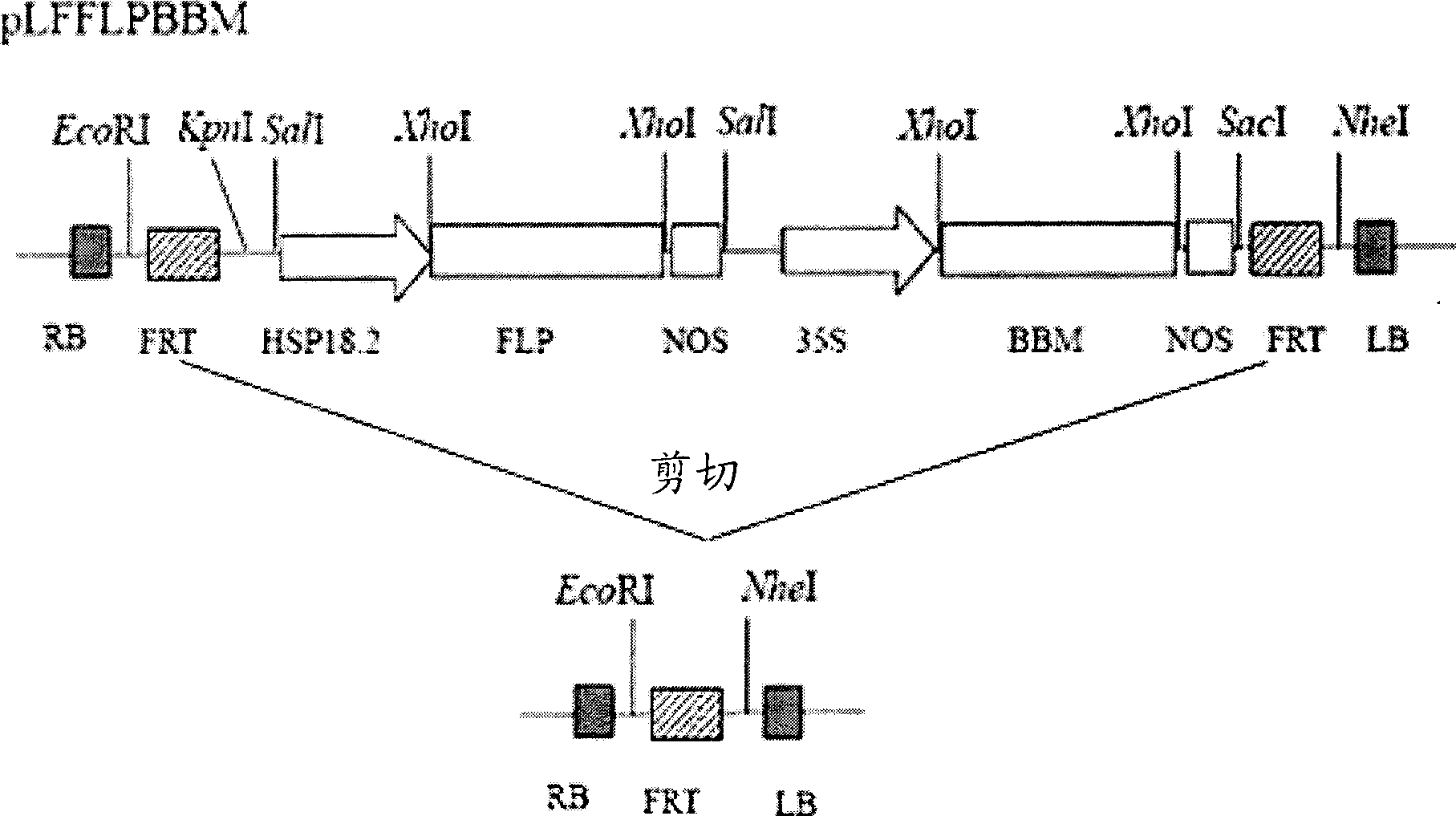Plant binary expression vector for inducing embryoid body formation and plant regeneration, and construction method and application thereof
A binary expression vector, plant technology, applied in the fields of botanical equipment and methods, biochemical equipment and methods, applications, etc., can solve problems such as difficulty in plant regeneration, inability to obtain regenerated seedlings, large differences in transformation frequency and regeneration frequency, etc.
- Summary
- Abstract
- Description
- Claims
- Application Information
AI Technical Summary
Problems solved by technology
Method used
Image
Examples
Embodiment Construction
[0051] Hereinafter, the preferred embodiments of the present invention will be described in detail with reference to the accompanying drawings. The experimental methods that do not specify specific conditions in the preferred embodiments usually follow conventional conditions, such as those described in the Molecular Cloning Experiment Guide (third edition, J. Sambrook et al., translated by Huang Peitang et al., Science Press, 2002) , Or in accordance with the conditions recommended by the manufacturer.
[0052] The preferred embodiment of the present invention uses the CaMV 35S promoter to control the overexpression of the BBM gene, promotes the formation of embryoid bodies in plant callus, and then induces the formation of transgenic plants, thereby promoting plant regeneration and genetic transformation; at the same time, the heat shock promoter HSP18 is used .2 Control the FLP gene, and induce FLP expression through heat shock treatment of the obtained transgenic plants, delet...
PUM
 Login to View More
Login to View More Abstract
Description
Claims
Application Information
 Login to View More
Login to View More - R&D
- Intellectual Property
- Life Sciences
- Materials
- Tech Scout
- Unparalleled Data Quality
- Higher Quality Content
- 60% Fewer Hallucinations
Browse by: Latest US Patents, China's latest patents, Technical Efficacy Thesaurus, Application Domain, Technology Topic, Popular Technical Reports.
© 2025 PatSnap. All rights reserved.Legal|Privacy policy|Modern Slavery Act Transparency Statement|Sitemap|About US| Contact US: help@patsnap.com



